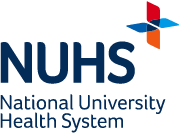Diet
Small babies - especially those with hole in the heart have an increased food requirement and may need special milk.
Dental Care
Good dental hygiene is essential, especially for children and adults with congenital heart disease, as poor dental health can lead to infections spreading to the heart. Therefore, regular dental check-ups are crucial.
Inform your dentist about the heart condition before any treatment. To prevent germs from entering the bloodstream and affecting the heart, a single dose of antibiotics may be given one hour prior to dental procedures.
Exercise
Children diagnosed with Tetralogy of Fallot, particularly those with residual complications, are advised to engage in light, low-impact physical activities, such as golf and cricket.
Exercise is beneficial, even for those with heart conditions. It improves heart function, overall well-being and is associated with increased life expectancy and reduced heart disease risk in later life. It also aids in weight control and blood pressure reduction.
Different types of exercise, such as static (e.g., weight lifting) and dynamic dynamic (e.g., running), have varying impacts on the body and heart. Children with heart conditions should consult their doctor to determine safe levels and types of exercise, especially in school settings where physical activities can be intensive.
Vaccination
Most children with heart disease can follow standard vaccinations schedule. However, those with immune deficiencies, such as DiGeorge syndrome or an isomerism, or those who are receiving immunosuppression, such as post-transplantation, may require a modified vaccination schedule.
Travel Advice
Before travelling, especially long distances or to unusual destinations:
- Have a recent medical check-up
- Ensure appropriate insurance coverage
- Carry an adequate supply of medication
- Be informed about the local healthcare quality and accessibility
- Carry relevant documentation about the heart condition
- For cyanotic heart disease patients, be aware of potential oxygen needs during flights
- Use support stockings and take aspirin or equivalent unless your doctor advises against it
Diet
Special diets are not normally required for those with heart disease, but a balanced one is important. Maintaining a normal weight is crucial as excess weight increases the heart’s workload.
Infection
Children with heart disease are generally not more prone to infections, although some may be susceptible to chest infections or have associated immune deficiencies, particularly those with holes in the heart (ASD, VSD, PDA). Viral infections are common and usually resolve without antibiotics, but medical advice should be sought in case of uncertainty.
Medication
Not all children with heart disease require medication. Those who do may need it for fluid reduction, aiding heart pumping, rhythm control or blood thinning.
While these medications are generally safe, side effects can occur, especially with other illnesses or medication changes. Any unusual symptoms or side-should be promptly reported to the doctor.
Pregnancy
Most women with heart disease can have a normal pregnancy and delivery. Exceptions may include those with severe cyanosis or pulmonary hypertension, where pregnancy can pose significant risks.
It is essential to seek medical advice before pregnancy so the process can be monitored, and if treatment is necessary, it can be provided early.
The risk of heart disease in offspring varies, with some evidence suggesting that vitamin intake before and during early pregnancy may reduce risks.

















